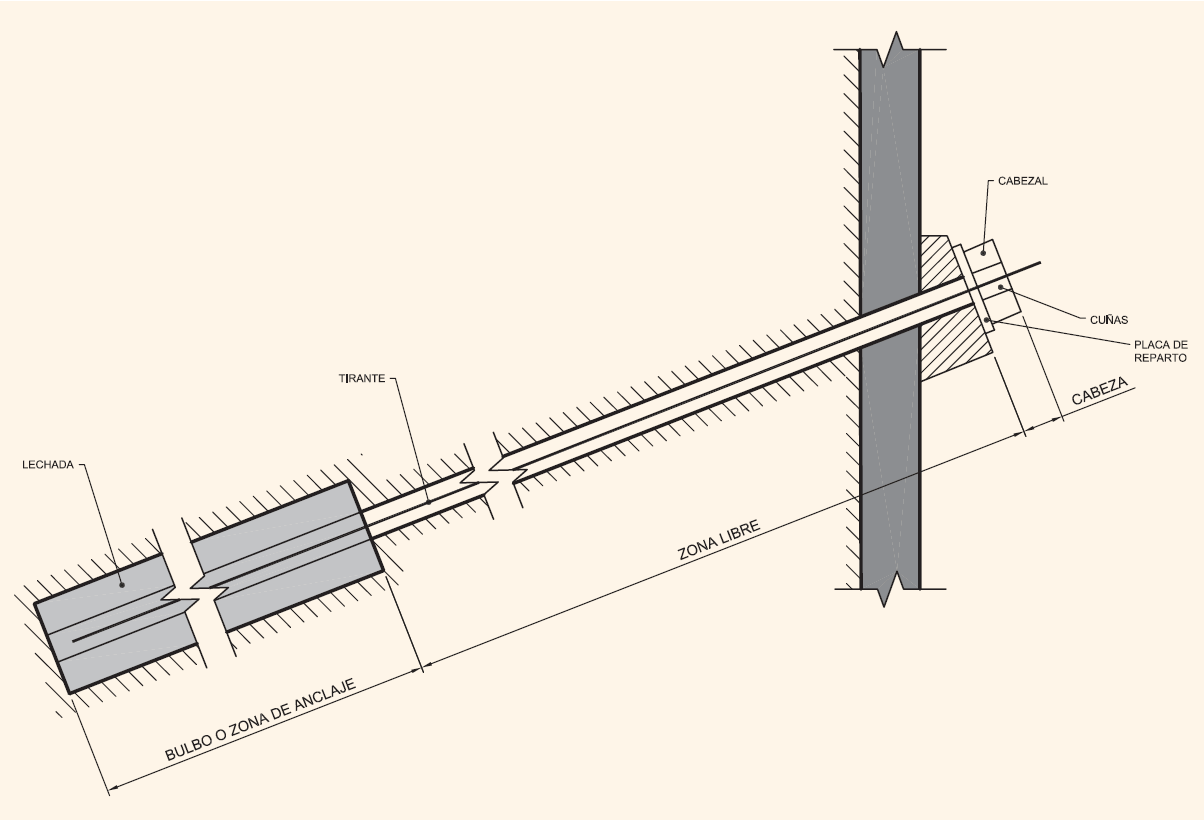InGeoLAC
Valuable Data
Verification of Tensioning Equipment
Ground anchors are post-tensioned structural elements, used to stabilise retaining walls, sheet pile protection, slabs subjected to hydrostatic thrust, quays in harbours and the like.
Basically, the tieback consists of an externally visible head zone, an elongation zone (free tendon length) and a fixed anchor length (tendon bond or grouted zone). The main component of a ground anchor is the steel strand or bar, loaded by means of a hydraulic tensioning jack.
Basically, the tieback consists of an externally visible head zone, an elongation zone (free tendon length) and a fixed anchor length (tendon bond or grouted zone). The main component of a ground anchor is the steel strand or bar, loaded by means of a hydraulic tensioning jack.
The design and installation of anchors require solid geotechnical knowledge and extensive expertise in their implementation. At InGeoLAC we verify, on site, that the load applied to the anchor by means of the hydraulic tensioning jack is, effectively, the one specified in the project. While tensioning and during the service phase, InGeoLAC also checks that the anchor deformations correspond to those prescribed by the technical specifications.
We apply these same verification systems to post-tensioned bottom and floor concrete slabs, bridges, and cable-stayed pedestrian walkways.
We apply these same verification systems to post-tensioned bottom and floor concrete slabs, bridges, and cable-stayed pedestrian walkways.
